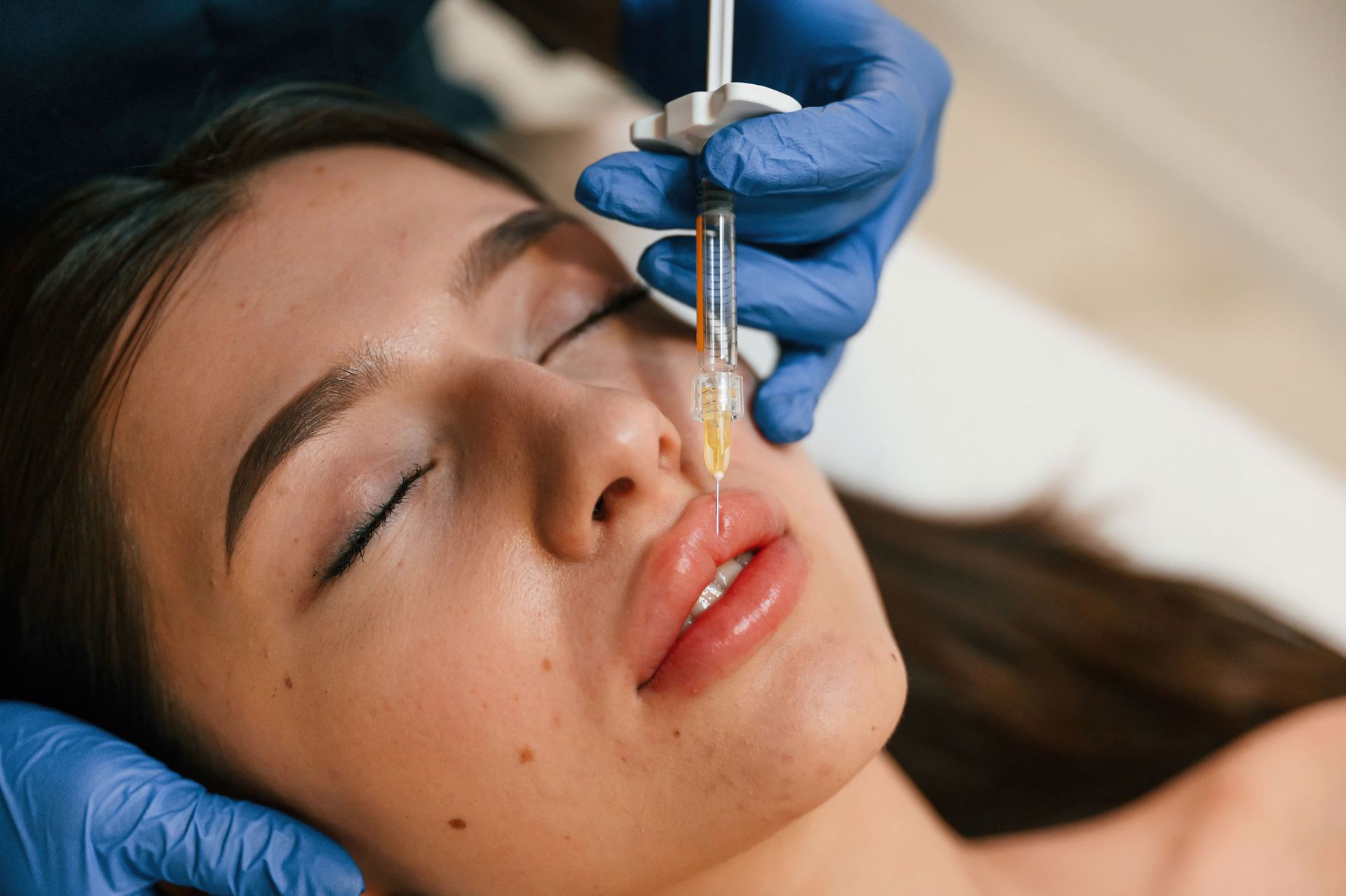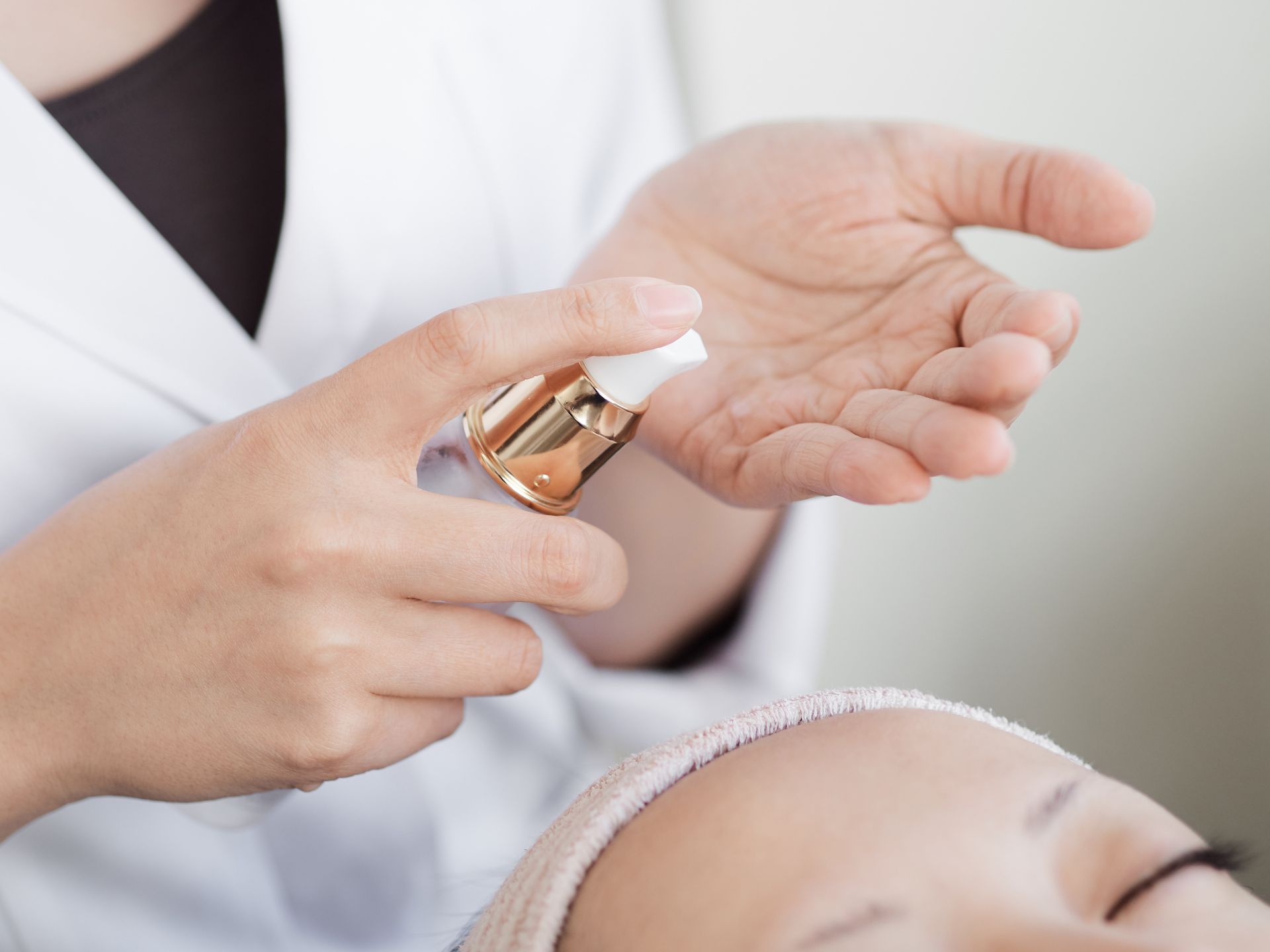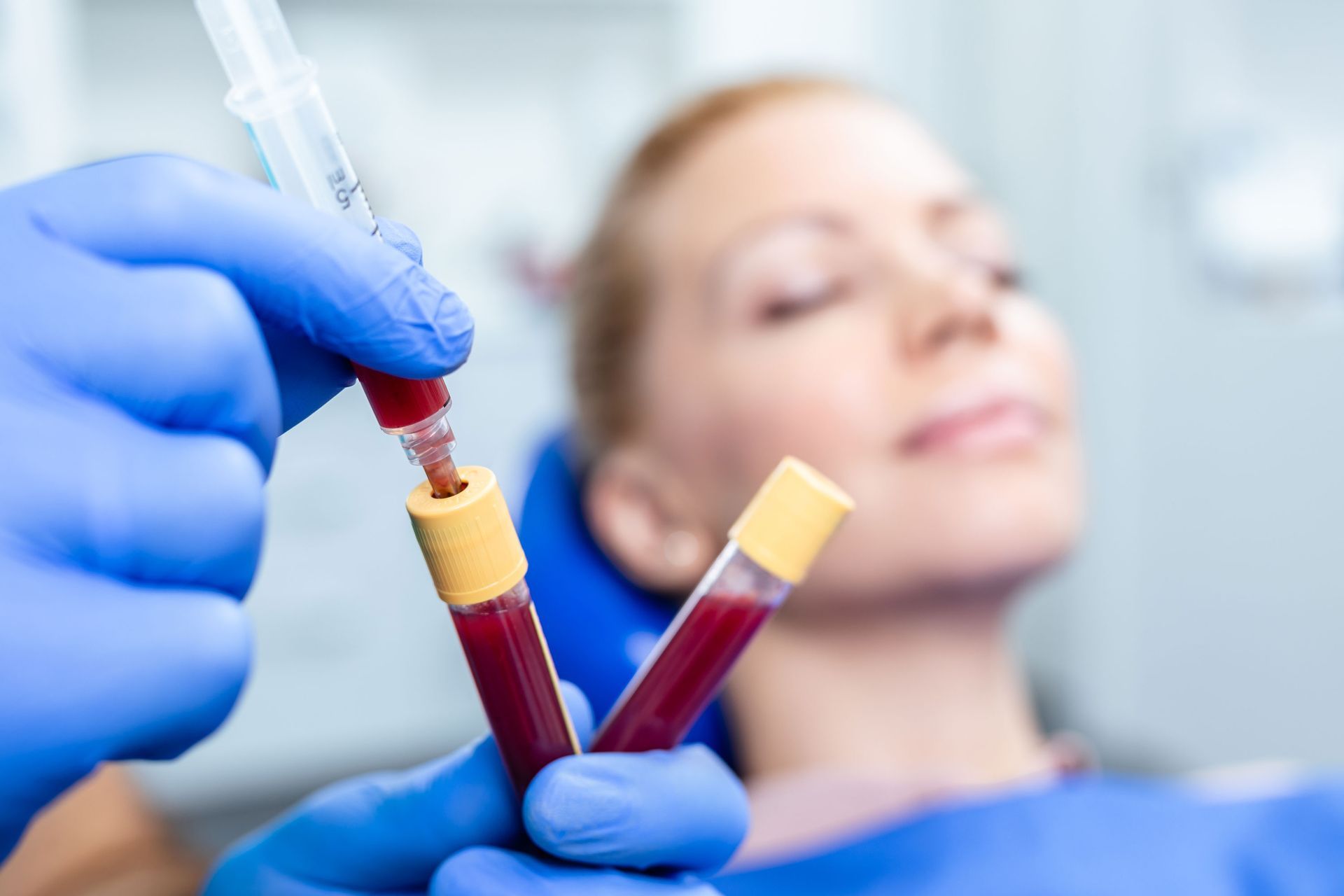Desarrollo profesional

What You Need to Know Lip fillers have become one of the most sought-after cosmetic treatments in recent years, thanks to their ability to enhance lip volume, correct asymmetry, and create a more youthful appearance. Whether you're considering this procedure for the first time or simply curious about its details, this blog covers everything you need to know about lip fillers—from the types available to the procedure itself and aftercare. What Are Lip Fillers? Lip fillers are a type of dermal filler designed to add volume to the lips. The most commonly used fillers are made from hyaluronic acid (HA), a naturally occurring substance in the body that helps retain moisture and adds plumpness. Popular brands include: Juvederm®: Known for creating a fuller, pillowy look. Restylane®: Ideal for a more natural enhancement. Teosyal RHA®: Offers flexibility and natural movement. Hyaluronic acid fillers are preferred because they are safe, reversible, and provide subtle results when applied correctly. Why Do People Get Lip Fillers? People opt for lip fillers for various reasons, including: Enhancing lip volume for a fuller appearance. Correcting asymmetry or unevenness in the lips. Restoring volume lost due to aging. Defining the lip borders (vermillion border) or Cupid's bow. Boosting self-confidence by achieving a desired aesthetic. The Procedure: What to Expect Getting lip fillers is a straightforward process that typically takes 30 minutes to 2 hours. Here's what happens during the procedure: Consultation: Your provider will discuss your goals, medical history, and any concerns. They may recommend a specific filler based on your desired look. Preparation: A numbing cream is applied to minimize discomfort. Some fillers also contain lidocaine for added pain relief. Injection: Using a fine needle, the filler is injected into specific areas of the lips, such as the edges (vermillion border) or center for volume. The provider may massage your lips gently to distribute the filler evenly. Aftercare: Ice packs may be applied to reduce swelling, and you'll be monitored briefly before being discharged. How Long Do Lip Fillers Last? Lip fillers are not permanent and typically last between 6 to 12 months, depending on factors like: The type of filler used. Your metabolism rate (faster metabolism can dissolve fillers quicker). Lifestyle habits such as smoking or sun exposure. Touch-ups are often recommended every 6–8 months to maintain results. Benefits of Lip Fillers Lip fillers offer several advantages: Non-invasive and quick recovery time. Customizable results based on individual preferences. Immediate improvements with minimal downtime. Reversible if you’re unhappy with the outcome (using an enzyme called hyaluronidase). Potential Side Effects While generally safe, lip fillers can cause minor side effects such as: Swelling and bruising (common in the first 24–48 hours). Redness or tenderness at the injection site. Rare complications like lumps or vascular occlusion if performed by an inexperienced injector. You can always choose a qualified professional with expertise in facial anatomy to minimize risks. Tips for First-Time Users If you're new to lip fillers, keep these tips in mind: Start small—using less filler initially allows you to adjust gradually. Research your provider—ensure they are licensed and experienced in administering dermal fillers. Be patient—swelling can take up to two weeks to subside entirely before you see final results. Communicate your goals clearly—whether you want a natural look or something more dramatic, transparency with your provider is key. FAQs About Lip Fillers 1. Will my lips sag if I stop getting fillers? No, your lips will return to their original state once the filler dissolves completely. In some cases, they may even retain improved hydration due to the hyaluronic acid. 2. Is it painful? Most patients report minimal discomfort due to numbing agents applied before the procedure. 3. Can I reverse the results? Yes, hyaluronic acid fillers can be dissolved using hyaluronidase if you're unhappy with the outcome. Final Thoughts Lip fillers are an excellent option for enhancing your appearance with minimal commitment. Whether you're looking for subtle volume or dramatic definition, this treatment offers customizable solutions tailored to your unique needs. However, success largely depends on selecting an experienced practitioner who prioritizes safety and natural-looking results. Call our office for a consultation.

A Revolutionary Skincare Solution In the ever-evolving world of skincare, microneedling has taken center stage as a non-invasive yet highly effective treatment for skin rejuvenation. Among the latest advancements in this field is the VAMP (Vitamins, Amino acids, Minerals and PDRN-salmon DNA) product, which combines microneedling technology with a potent bio-revitalizing serum enriched with cutting-edge ingredients like PDRN (Polydeoxyribonucleotide). This innovative approach is redefining how we combat aging, scars, and other skin imperfections. What is VAMP? VAMP is a topical, sterile bio-revitalizing solution designed to work synergistically with microneedling. Its unique formulation includes: PDRN: Derived from salmon DNA, this molecule is renowned for its regenerative properties. It accelerates skin repair, boosts collagen production, and improves hydration. Vitamins, Amino Acids, and Minerals: These nutrients nourish the skin at a cellular level, promoting elasticity and radiance. Hyaluronic Acid: Known for its hydration-boosting abilities, it plumps the skin and smooths fine lines. When paired with microneedling, VAMP penetrates deep into the dermis through microchannels created by tiny needles. This enhances the absorption of its active ingredients, delivering visible and long-lasting results. How Does VAMP Microneedling Work? The process begins with cleansing the face and applying a numbing cream to ensure comfort. A microneedling device is then used to create controlled micro-injuries on the skin's surface. These microchannels allow the VAMP serum to penetrate deeply, stimulating natural healing and regeneration processes. Key mechanisms include: Collagen Stimulation: Microneedling triggers the body’s wound-healing response, boosting collagen and elastin production. Enhanced Absorption: The serum's active ingredients reach deeper layers of the skin for maximum efficacy. Cellular Renewal: PDRN promotes faster cell turnover, reducing fine lines, scars, and pigmentation. Benefits of VAMP Microneedling Skin Rejuvenation: Stimulates collagen production for improved elasticity and firmness. Reduces fine lines and wrinkles for a youthful appearance. Improved Skin Texture and Tone: Minimizes pore size. Smooths rough patches and evens out discoloration. Scar Reduction: Effective in diminishing acne scars and other imperfections by promoting tissue regeneration. Hydration Boost: Hyaluronic acid enhances moisture retention for plumper, more radiant skin. Quick Recovery : Minimal downtime; most redness subsides within 24-48 hours. Long-Lasting Results: With consistent treatments (typically 3–6 sessions), results continue to improve over time. Why Choose VAMP Over Traditional Microneedling?

Laser therapy has emerged as a leading minimally invasive solution for addressing spider veins and small varicose veins, offering patients a blend of efficacy, safety, and convenience. By utilizing targeted light energy, this technology collapses problematic veins, which the body subsequently absorbs, resulting in visibly clearer skin. While sclerotherapy remains the gold standard for many cases, advancements in laser systems—such as pulsed dye lasers, Nd:YAG lasers, and intense pulsed light (IPL) devices—have expanded treatment options, particularly for superficial veins, needle-averse patients, or those with allergies to sclerosing agents. This blog explores the mechanisms, applications, and innovations in laser vein treatment, alongside practical considerations for prospective patients. Mechanism of Laser Therapy in Vein Treatment Principles of Selective Photothermolysis Laser therapy operates on the principle of selective photothermolysis, where specific wavelengths of light are absorbed by hemoglobin in the blood. This energy converts to heat, damaging the vein walls and triggering a clotting response. Over weeks, the destroyed vein is reabsorbed by the body, and blood reroutes through healthier vessels. The precision of modern lasers minimizes damage to surrounding tissues, making the procedure safer and reducing recovery time. Types of Lasers and Their Applications Pulsed Dye Lasers (PDL): Ideal for small spider veins (0.1–1 mm diameter), PDLs emit short bursts of yellow light (585–600 nm) that target oxyhemoglobin. Integrated cooling systems protect the skin, reducing risks of burns or hyperpigmentation. Nd:YAG Lasers (1064 nm): Penetrating deeper than PDLs, Nd:YAG systems treat larger reticular veins (1–3 mm) and are effective on darker skin tones due to reduced melanin absorption. Diode Lasers: Combining deep penetration with cooling mechanisms, these are versatile for both facial and leg veins. Intense Pulsed Light (IPL): Though not a true laser, IPL uses broad-spectrum light to treat diffuse spider veins, particularly on the face. Clinical Efficacy and Treatment Protocols Session Requirements and Outcomes Most patients require 1–6 sessions spaced 4–6 weeks apart, depending on vein size and density. Smaller facial veins may show improvement after one treatment, while leg veins often need 3+ sessions due to higher venous pressure. Studies report a 70–80% reduction in visible veins, with optimal results appearing within 3–6 months as the body clears cellular debris. Comparative Effectiveness Vs. Sclerotherapy: Laser therapy is less effective for veins >2 mm but excels in treating tiny, superficial spider veins (<1 mm) and areas prone to ulceration from injections (e.g., ankles). Combination Therapy: Pairing lasers with sclerotherapy enhances outcomes for mixed-size veins, with lasers addressing residual capillaries post-injection. Technological Innovations in Laser Vein Treatment Cutera Excel V+ This next-generation laser combines dual wavelengths (532 nm and 1064 nm) to target both superficial and deeper veins. Its dynamic cooling system improves patient comfort, while adjustable pulse durations accommodate varying skin types. Endovenous Laser Ablation (EVLA) For small varicose veins connected to incompetent saphenous veins, EVLA introduces a laser fiber via catheter into the vein under ultrasound guidance. The 1470 nm diode laser seals the vein with minimal discomfort, achieving closure rates exceeding 95%. Portable IPL Devices Recent advancements in IPL technology allow for handheld, home-use devices. While less potent than clinical systems, these tools offer maintenance therapy to slow vein recurrence. Patient Experience and Recovery Procedure Overview Preparation: Patients avoid sun exposure, NSAIDs, and blood thinners for 2 weeks pre-treatment. A topical anesthetic may be applied for sensitive areas. Treatment: Sessions last 15–30 minutes. Cooling gels and devices protect the skin, with patients reporting a "rubber band snap" sensation during pulses. Post-Procedure Care: Immediate redness and swelling resolve within 48 hours. Compression stockings are recommended for leg treatments to enhance results. Risks and Side Effects Common transient effects include bruising, erythema, and hyperpigmentation (5–10% of cases). Rare complications like crusting or ulceration (<1%) are linked to improper device settings or aftercare. Darker skin tones require careful wavelength selection to avoid hypopigmentation. Determining Candidacy and Pre-Treatment Considerations Ideal Candidates Laser therapy suits patients with: Superficial spider veins (face or legs). Needle phobia or allergies to sclerosing agents. Veins too small for sclerotherapy (<1 mm). Contraindications Pregnancy or lactation. Active infections or compromised healing. Tattoos in the treatment area (pigment interference). Pre-Treatment Evaluation A venous Doppler ultrasound is recommended to rule out underlying chronic venous insufficiency, which may require adjunct therapies like EVLA or radiofrequency ablation. At our office we offer Vasculaze system from Inmode, specifically for spider veins and small reticular veins. Call our office for an appointment 705-789-1874 . Conclusion Laser therapy represents a paradigm shift in managing spider veins and small varicose veins, combining scientific precision with patient-centric convenience. While not a panacea, its evolution—from early argon lasers to AI-enhanced systems—underscores its growing role in dermatologic and vascular care. Prospective patients should consult board-certified specialists to tailor treatments to their anatomical and lifestyle needs, ensuring optimal cosmetic and functional outcomes. As technology advances, laser therapy is poised to become even more accessible, cementing its status as a cornerstone of modern vein treatment.

Dermal fillers have revolutionized cosmetic dermatology by offering non-surgical solutions to age-related volume loss, facial contouring, and wrinkle reduction. As hyaluronic acid-based formulations dominate the market, their versatility and efficacy continue to attract millions seeking rejuvenation. However, their use requires a nuanced understanding of anatomical considerations, patient suitability, and potential risks. This comprehensive analysis explores the mechanisms, clinical applications, contraindications, and complications of dermal fillers, supported by current research and clinical insights. Mechanisms of Action and Composition Dermal fillers primarily consist of hyaluronic acid (HA), a glycosaminoglycan naturally present in skin, connective tissues, and synovial fluid. HA’s capacity to bind water molecules—up to 1,000 times its weight—enables it to restore hydration, elasticity, and volume in aging skin. Synthetic HA formulations are cross-linked to delay enzymatic degradation, with longevity ranging from 6 to 18 months depending on the product’s density and injection site. For instance, Juvederm Voluma® uses a higher HA concentration for cheek augmentation, while Restylane Kysse® employs a smoother consistency for lip enhancement. Beyond HA, alternative fillers include: Calcium hydroxylapatite (Radiesse®): Stimulates collagen production for long-term volume correction. Poly-L-lactic acid (Sculptra®): A biodegradable polymer that gradually restores facial contours over months. These materials work by physically filling depressions, stimulating collagen synthesis, or both, offering tailored solutions for diverse aesthetic goals. Clinical Applications and Indications 1. Volume Restoration Age-related fat atrophy and collagen depletion lead to hollowing in the cheeks, temples, and under-eye regions. Fillers like Juvederm Voluma® and Restylane Lyft® are injected deep into the subcutaneous tissue to lift and support sagging midface structures, achieving a more youthful triangular facial shape. Patients report improved facial symmetry and reduced “tired” appearances post-treatment. 2. Wrinkle and Fold Reduction Nasolabial folds, marionette lines, and perioral wrinkles arise from repetitive muscle contractions and volume loss. Medium-density fillers such as Juvederm Ultra XC® are injected into the dermis to smooth these lines, often with immediate result. 3. Facial Contouring Jawline definition, chin augmentation, and lip enhancement are increasingly popular. For example, hyaluronic acid fillers like Teosyal Kiss® add structure to thin lips while minimizing vertical rhytide. Similarly, strategic placement along the mandibular angle can create a sharper, more V-shaped jawline. 4. Hand Rejuvenation Emerging applications include hand volumization to reduce the visibility of tendons and veins, using fillers like Restylane Lyft®. Contraindications and Patient Selection While dermal fillers are generally safe, specific conditions preclude their use: Absolute Contraindications Active infections (bacterial, viral, or fungal) near the injection site due to sepsis risk. Hypersensitivity to HA, lidocaine, or bacterial proteins used in fermentation. Pregnancy/lactation: Limited safety data exist, though no teratogenic effects are proven. Severe autoimmune diseases (e.g., scleroderma) due to impaired healing. Uncontrolled diabetes or immunosuppression, which heighten infection risks. Relative Contraindications History of keloid scarring: May exacerbate abnormal fibroblast activity. Recent facial surgery or laser treatments: Wait 4–6 weeks to avoid inflammatory reactions. Anticoagulant use: Increases bruising risk; consider discontinuing (under physician guidance) 1–2 weeks pre-treatment. Notably, autoimmune conditions like lupus or rheumatoid arthritis are not contraindications unless accompanied by active skin lesions. Complications and Risk Mitigation Early-Onset Complications (Hours to Days Post-Treatment Bruising and Swelling: Affects 15–30% of patients, resolving within 7 days. Arnica montana and cold compresses mitigate severity. Vascular Compromise: Rare (<0.01%) but catastrophic. Intravascular injection can occlude the supratrochlear or angular arteries, leading to skin necrosis or retinal artery embolism Prevention relies on aspiration before injection, use of blunt cannulas, and avoiding high-pressure areas like the glabella. Hypersensitivity Reactions: Present as erythema or itching. Hyaluronidase (15–30 units) rapidly dissolves HA fillers in such cases. Delayed Complications (Weeks to Months) Granulomas: Immune-mediated nodules forming months post-injection. Management includes intralesional steroids (triamcinolone 10–40 mg/mL) or surgical excision. Biofilm Infections: Chronic inflammation from bacterial colonization, requiring antibiotics (e.g., clarithromycin 500 mg BID) and filler dissolution. Tyndall Effect: Blueish discoloration from superficial HA placement, corrected with hyaluronidase. High-Risk Zones Glabella: High risk of supratrochlear artery occlusion. Nasolabial folds: Proximity to the facial artery. Tear troughs: Thin skin increases visibility of irregularities. Clinical Best Practices Pre-Treatment Assessment: Evaluate medical history, allergies, and medication use. Use standardized scales (e.g., GAIS) to document baseline asymmetry and volume loss. Injection Techniques: Linear threading: For lip vermillion borders. Fanning: Covers broad areas like cheeks. Boluses: Deep injections for chin augmentation. Emergency Protocols: Vascular occlusion: Immediate hyaluronidase (150–300 units), nitroglycerin paste, and warm compresses. Vision loss: Refer to ophthalmology within 90 minutes for intra-arterial thrombolytics. Ethical Considerations and Patient Counseling Informed consent must address: Realistic outcomes: Fillers enhance but don’t replicate youthful anatomy. Temporary nature: Maintenance sessions every 6–24 months. Financial costs: Ranging from $600–1000 per session depending on product and volume. Patient testimonials highlight the psychological benefits, with many reporting heightened self-esteem and social confidence. However, practitioners must screen for body dysmorphic disorder, as dissatisfaction post-treatment may indicate underlying psychiatric conditions. We use only absorbable products at our practice mainly Allergan and Revanesse fillers. We cannot emphasize enough the importance of the first consultation, basically for the benefit of the patient. Conclusion Dermal fillers represent a synergy of biomedical innovation and aesthetic artistry, offering safe, customizable solutions for age-related changes. However, their success hinges on meticulous technique, anatomical expertise, and adherence to safety protocols. As research advances, next-generation fillers with longer durations and reduced immunogenicity promise to further elevate patient outcomes. Practitioners are urged to pursue continuous education—particularly in vascular anatomy and complication management—to uphold the highest standards of care in this dynamic field. Call our office for a consultation 705-789-1874

In a world where first impressions matter, Botox has emerged as a transformative solution for both aesthetic refinement and medical relief. Beyond its renowned ability to smooth wrinkles, this FDA-approved treatment offers a spectrum of advantages that cater to holistic well-being. Let’s explore how Botox can rejuvenate your appearance, elevate your confidence, and even address chronic health concerns—all through a quick, minimally invasive procedure. Aesthetic Enhancements That Speak Volumes Botox’s magic lies in its capacity to soften dynamic wrinkles—those subtle lines formed by years of smiling, frowning, or squinting. By gently relaxing targeted facial muscles, it restores a youthful radiance, turning back the clock on crow’s feet, forehead lines, and frown lines. The results? A refreshed, natural-looking glow that requires no downtime, letting you return to daily life immediately]. But the benefits don’t stop at aesthetics. Did you know Botox can also refine skin texture and minimize pore size? Clinical studies report 95% patient satisfaction with these secondary improvements. Beyond Beauty: Unexpected Medical Advantages While Botox is celebrated for its cosmetic results, its therapeutic applications are equally groundbreaking. For those battling chronic migraines, injections can reduce headache frequency by blocking pain-signaling nerves. Excessive sweating (hyperhidrosis) becomes manageable as Botox inhibits overactive sweat glands, offering months of relief from social discomfort. Jaw tension from TMJ disorders? Botox relaxes clenched muscles, alleviating pain and improving jaw function. Even conditions like overactive bladder and muscle spasms respond to this versatile treatment, showcasing its role in enhancing quality of life. Instant Gratification Meets Lasting Confidence One of Botox’s most appealing traits is its rapid impact. Visible improvements often appear within days, with full results emerging over two weeks—a timeline far quicker than many cosmetic alternatives. These effects typically last 3–4 months, allowing flexibility to adjust treatments as needed. Whether you’re preparing for a special event or seeking long-term rejuvenation, Botox adapts to your goals. Your Journey to Self-Assurance Starts Here Choosing Botox isn’t just about looking younger—it’s about reclaiming confidence in your skin. Patients frequently describe a renewed sense of self-esteem as mirror reflections align with their vibrant inner selves. And with customizable treatment plans, you control the degree of enhancement, ensuring results that feel authentically *you*. Ready to explore how Botox can transform your life? Consult our expert team at 705-789-1874.

In the fast-paced world of surgery, decision-making is a critical skill that can mean the difference between life and death. As technology continues to advance, surgeons are finding themselves at a crossroads, much like the airline industry did years ago. By embracing new technologies and adopting innovative decision-making processes, surgeons can revolutionize their field and improve patient outcomes. The Art of Surgical Decision-Making Clinical decision-making is a core competency of surgical practice, involving a complex interplay of intuitive and analytical thinking. Surgeons must navigate a continuum of mental processes, ranging from subconscious pattern recognition to conscious, analytical reasoning. This ability to seamlessly transition between these modes of thinking is what sets expert surgeons apart. Expert surgeons: - Recognize and respond quickly to mismatches between observations and expectations - Cope with information gaps and uncertainties - Apply learned rules and algorithms to specific presentations However, even for experts, articulating these cognitive processes can be challenging due to their complexity. Lessons from the Skies The airline industry has long been at the forefront of incorporating technology to enhance decision-making and safety. Surgeons can learn valuable lessons from this sector's digital transformation: Data-Driven Decisions: Airlines use big data and analytics to optimize operations and improve efficiency. Surgeons can similarly leverage data to inform their decision-making processes, from preoperative planning to postoperative care. Artificial Intelligence and Machine Learning: In aviation, AI and ML power predictive maintenance systems, reducing downtime and costs. In surgery, these technologies could assist in predicting complications and optimizing surgical outcomes. Automated Systems: Airlines have implemented automated check-in and boarding systems to streamline processes. Surgeons could benefit from automated preoperative checklists and decision support tools to enhance safety and efficiency. Real-Time Monitoring: The Internet of Things (IoT) enables real-time monitoring of aircraft systems. In the operating room, similar technologies could provide surgeons with continuous, real-time patient data during procedures. Implementing Technology in Surgical Practice To truly revolutionize surgical decision-making, the following steps should be considered: Embrace AI-Driven Tools: Implement AI-powered decision support systems to enhance accuracy and leverage big data effectively. Enhance Operational Awareness: Utilize real-time monitoring and analytics tools to improve situational awareness during surgeries. Adopt Cloud-Based Solutions: Implement cloud technology to facilitate instant data sharing and collaboration across surgical teams. Invest in Training: Develop comprehensive training programs to help surgeons adapt to new technologies and decision-making frameworks. The Future of Surgical Decision-Making Integrating technology into surgical decision-making will become increasingly important as we look to the future. By learning from the airline industry's digital transformation, surgeons can: - Improve patient safety through enhanced monitoring and predictive analytics - Optimize surgical outcomes by leveraging data-driven insights - Streamline processes and reduce cognitive load during complex procedures The path forward requires a commitment to continuous learning and adaptation. One research study notes, “If surgeons are to assist trainees in developing their decision-making skills, the processes need to be identified and defined, and the competency needs to be measurable.” By embracing technology and refining their decision-making processes, surgeons can elevate their practice to new heights, ensuring better patient outcomes and advancing the field of surgery. In my ideal world of surgery, if we have the best tools to do our job, we deliver. We need technology and financial resources to use and maximize our skills, which take years to develop.

Retinol has earned its reputation as the gold standard in skincare for good reason. This vitamin A derivative offers a multitude of benefits that can transform your skin, making it a must-have ingredient in any comprehensive skincare regimen. The Science Behind Retinol Retinol belongs to a class of compounds called retinoids, which are derived from vitamin A. When applied to the skin, retinol penetrates deep into the dermis, where it works its magic. Here's what happens: Cell Turnover: Retinol accelerates the skin's natural cell turnover process, helping to shed dead skin cells more quickly. Collagen Production: It stimulates collagen production, which is crucial for maintaining skin's firmness and elasticity. Blood Vessel Formation: Retinol promotes the formation of new blood vessels, improving skin color and overall appearance. Key Benefits of Retinol 1 Combats Signs of Aging - One of retinol's most celebrated benefits is its ability to fight visible signs of aging. - Reduces fine lines and wrinkles - Improves skin texture and firmness - Fades age spots and evens out skin tone 2 Treats Acne - Retinol is not just for mature skin; it's also highly effective in treating acne.- - Unclogs pores to prevent breakouts - Reduces inflammation associated with acne - Helps fade acne scars and hyperpigmentation 3 Improves Overall Skin Health - Beyond its anti-aging and acne-fighting properties, retinol offers several other benefits. - Enhances skin's radiance and glow - Refines pore size - Improves skin's overall texture and tone How to Incorporate Retinol into Your Routine While retinol is powerful, it requires careful introduction to your skincare routine. Start Slow: Begin with a low concentration and use it 2-3 times weekly. Gradually Increase: Increase frequency and concentration over time as your skin builds tolerance. Apply at Night: Use retinol products in your evening routine, as they can increase sun sensitivity. Pair with Sunscreen: Always use a broad-spectrum sunscreen during the day when using retinol. Choosing the Right Retinol Product With numerous retinol products available, choosing one that suits your skin type and concerns is essential. We can help you with this if you like. We have different concentrations to offer you. - For beginners or sensitive skin: Start with a low concentration (0.01% - 0.03%) - For more experienced users: Gradually work up to higher concentrations (0.1% and above) - Consider formulation: Retinol comes in serums, creams, and oils to suit different preferences The Long-Term Benefits Consistency is key when using retinol. While some improvements may be visible within weeks, the most significant benefits are seen with long-term use. With regular application, you can expect: - Continued improvement in skin texture and tone - Sustained reduction in fine lines and wrinkles - Long-lasting clarity and radiance Conclusion Retinol stands out as a genuinely transformative ingredient in skincare. Its ability to address multiple skin concerns simultaneously makes it an invaluable addition to any skincare routine. Whether you're looking to combat signs of aging, clear acne, or improve your overall skin health, retinol offers a science-backed solution that delivers accurate results. Please introduce it slowly, be patient and consistent, and you'll be on your way to getting your best skin yet. We have Alumier MD products. Please get in touch with our office - 705-789-1874

Here are some key things to bring to your first consultation with a new doctor: Medical Records and Information - List of current medications, including dosages and frequency - Medical history, including past surgeries, hospitalizations, and major illnesses - Family medical history, especially for conditions like cancer, heart disease, etc. - Immunization records - Recent lab results or imaging studies (X-rays, MRIs, etc.) - Names and contact information for other doctors you see Health card - Insurance card - Any referral forms if required by your insurance List of Questions and Concerns - Write down your main health concerns and symptoms - Note any questions you want to ask the doctor - Prioritize your list, focusing on the most important issues Other Helpful Items - A notebook and pen to take notes during the appointment - A family member or friend for support - Calendar to schedule any follow-up appointments - List of allergies to medications or other substances - Information on your diet, exercise habits, alcohol/tobacco use For the Appointment - Arrive 10 min minutes early to complete paperwork - Wear comfortable clothing that allows for a physical exam if needed - Be prepared to discuss your full medical history openly and honestly By bringing these items, you'll help ensure a productive first visit and allow your new doctor to get a comprehensive picture of your health. Don't hesitate to ask questions and voice any concerns during the appointment. Establishing good communication from the start will help build a strong doctor-patient relationship.

Platelet-rich plasma (PRP) therapy has emerged as an innovative and promising treatment in regenerative medicine. This blog will explore the science behind PRP, its applications, and what patients can expect from this cutting-edge therapy. What is Platelet-Rich Plasma? Platelet-rich plasma is a concentration of platelets derived from a patient's own blood. Platelets are blood cells that play a crucial role in clotting and wound healing. They contain growth factors and other bioactive proteins that stimulate cellular repair and regeneration. To create PRP, a small sample of the patient's blood is drawn and then processed in a centrifuge. This separates the blood components, allowing for the extraction of a plasma sample with a high concentration of platelets - typically 3-5 times higher than normal blood. How Does PRP Therapy Work? When injected into an injured or damaged area, the concentrated platelets release growth factors that: 1. Stimulate tissue repair 2. Increase blood flow to the area 3. Promote cell regeneration 4. Reduce inflammation This process can accelerate healing and potentially improve function in various tissues, including tendons, ligaments, muscles, and joints. Applications of PRP Therapy PRP therapy has shown promise in treating a wide range of conditions: 1. Orthopedic injuries and conditions (e.g., tendonitis, osteoarthritis) 2. Sports-related injuries 3. Hair loss (androgenic alopecia) 4. Skin rejuvenation 5. Wound healing In orthopedics, PRP has been used to treat chronic tendon injuries like tennis elbow and to manage osteoarthritis pain. In dermatology, it's gaining popularity as a treatment for hair loss and as part of facial rejuvenation procedures. The PRP Procedure A typical PRP treatment involves the following steps: 1. Blood draw: A small amount of blood is taken from the patient. 2. Processing: The blood is centrifuged to separate and concentrate the platelets. 3. Preparation: The platelet-rich plasma is extracted. 4. Injection: The PRP is injected into the target area, sometimes guided by ultrasound. The entire process usually takes less than an hour and is performed on an outpatient basis. Effectiveness and Research While PRP therapy shows promise, it's important to note that research is still ongoing. Some studies have shown positive results, particularly in treating certain orthopedic conditions and hair loss. However, the effectiveness can vary depending on the specific condition being treated and the individual patient. In hair loss treatment, PRP has shown potential in stimulating hair growth and improving hair thickness. Safety and Side Effects One of the key advantages of PRP therapy is its safety profile. Since the treatment uses the patient's own blood, the risk of allergic reactions or transmission of infectious diseases is minimal. The most common side effects are mild and typically include: - Temporary pain at the injection site - Minor bruising or bleeding - Short-term inflammation. Cost and Insurance Coverage The cost of PRP therapy can vary widely depending on the treatment area and the number of sessions required. Prices typically range from $500 to $2,000 USD per treatment. Conclusion Platelet-rich plasma therapy represents an exciting frontier in regenerative medicine. By harnessing the body's own healing mechanisms, PRP offers a potentially effective treatment option for a variety of conditions. While more research is needed to fully understand its efficacy across different applications, PRP therapy continues to gain popularity among patients and healthcare providers alike. As with any medical treatment, it's crucial to consult with a qualified healthcare professional to determine if PRP therapy is appropriate for your specific condition. They can provide personalized advice based on your medical history and current health status.

Botox, a household name in the world of cosmetic treatments, has a rich and intriguing history that spans over a century. This remarkable substance has evolved from a potentially deadly toxin to a versatile medical and aesthetic tool. Let's explore the fascinating journey of Botox and its wide-ranging applications. The Discovery of Botulinum Toxin The story of Botox begins in the late 19th century when a group of Belgian musicians fell ill after eating smoked ham at a funeral. This incident led to the discovery of botulinum toxin by Dr. Emile van Ermengem, a professor of bacteriology at the University of Ghent. Initially dubbed "sausage poison" due to its association with poorly prepared meat products, botulinum toxin would later become the foundation for one of the most popular cosmetic treatments in the world. Early Medical Applications It wasn't until the mid-20th century that researchers began to explore the therapeutic potential of botulinum toxin. In the 1950s, scientists started investigating its possible medical uses. The real breakthrough came in the 1970s when American ophthalmologist Dr. Alan Scott began researching the toxin as a treatment for eye impairments. In 1978, Dr. Scott made history by injecting botulinum toxin into a patient for the first time, aiming to treat eye muscles after retinal detachment surgery. This groundbreaking experiment paved the way for treating conditions like strabismus (crossed eyes) and blepharospasm (involuntary eye spasms). The Accidental Discovery of Cosmetic Benefits The cosmetic potential of botulinum toxin was discovered serendipitously. In the 1980s, doctors noticed that patients receiving injections for eye conditions also experienced smoothing of facial lines. This unexpected side effect sparked interest in the aesthetic applications of the toxin. The Birth of Botox In 1989, the FDA approved botulinum toxin for therapeutic use in treating strabismus and blepharospasm. Two years later, in 1991, the rights to the drug were sold, and it was rebranded as Botox by Allergan in 1992. Rise to Cosmetic Fame Throughout the 1990s, Botox gained popularity as a powerful tool for maintaining a youthful appearance. Doctors refined their techniques for cosmetic applications, and in 2002, the FDA approved Botox for cosmetic use in treating glabellar lines (frown lines between the eyebrows). Modern Applications Today, Botox has a wide range of both medical and cosmetic applications: Medical Uses: - Treating chronic migraines - Managing excessive sweating (hyperhidrosis) - Alleviating muscle spasms and movement disorders - Addressing overactive bladder issues - Treating cervical dystonia (neck muscle spasms) - Managing certain eye disorders - Anal fissures - Treatment of achalasia( disorder of the esophagus) Cosmetic Uses: - Reducing facial wrinkles, including crow's feet and forehead lines - Softening neck bands - Performing non-surgical brow lifts - Reducing gummy smiles - Contouring the jawline Safety and Considerations While Botox is generally considered safe when administered by qualified professionals, it's crucial to be aware of potential side effects and risks. These may include temporary muscle weakness, bruising, or swelling at the injection site. It's essential to consult with a licensed healthcare provider before undergoing any Botox treatment. The Future of Botox As research continues, new applications for Botox are constantly being explored. Ongoing trials are investigating its potential in treating conditions such as acne and psoriasis. The field of Botox treatments continues to evolve, promising exciting developments in both medical and aesthetic applications. There are several commercial products available on the market today: Botox- duration 3-6 months. Dysport- duration 3-6 months. Xeomin-duration 3-6 months. Jeuveau- Duration 3-6 months. Daxxify-duration 6-9 months- not approved in Canada. From its humble beginnings as a deadly toxin to its current status as a versatile medical and cosmetic tool, Botox has truly revolutionized the fields of medicine and aesthetics. Its journey is a testament to the power of scientific discovery and innovation, transforming an unlikely substance into a treatment that has helped millions of people worldwide.


